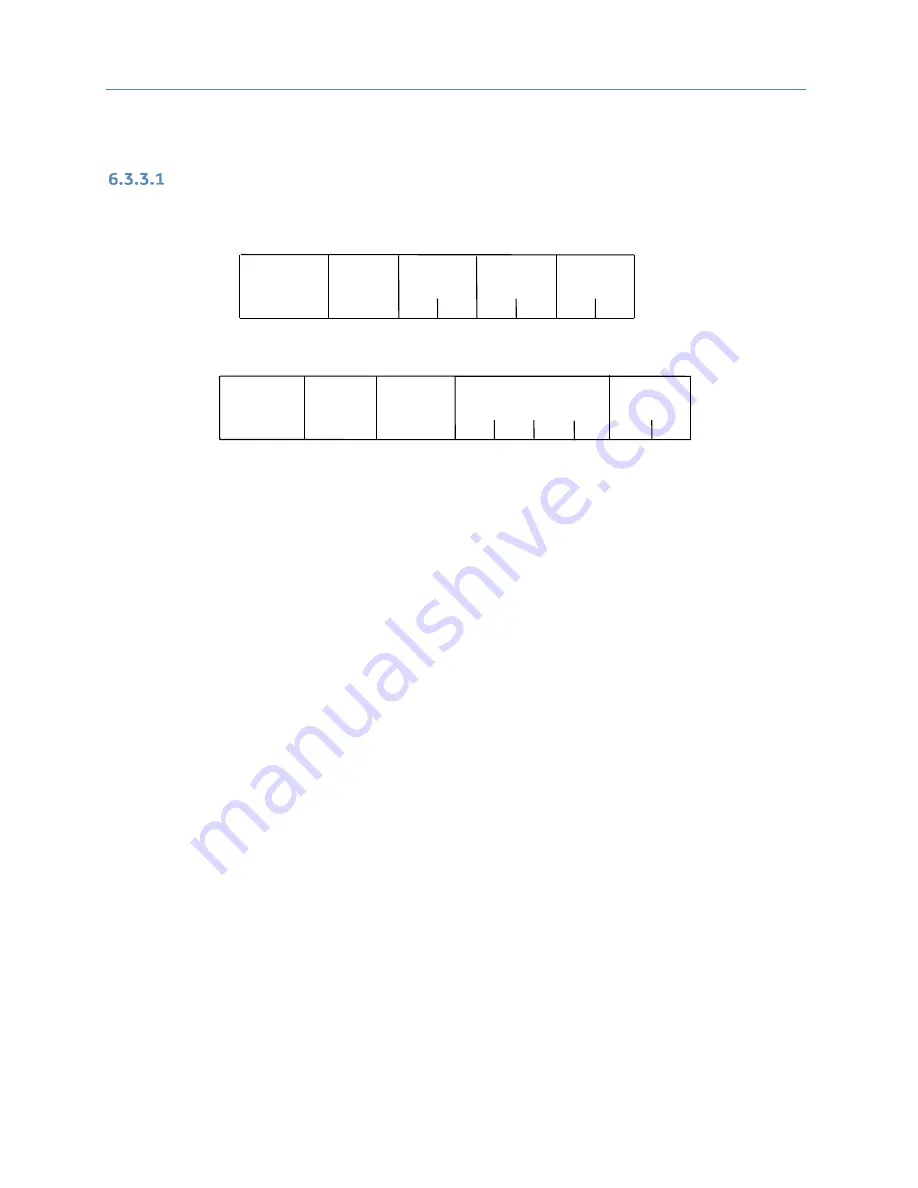
Chapter 6. Serial I/O, SNP & RTU Protocols
236
PACSystems* RX7i, RX3i and RSTi-EP CPU Reference Manual
GFK-2222AD
6.3.3
RTU Message Descriptions
This section presents the format and fields for each RTU message.
Message (01): Read Output Table
Format:
Address
Starting
Point No.
Number of
Points
Error
Check
Func
01
Query
Hi
Hi
Lo
Lo
Address
Data
Error
Check
Func
01
Normal Response
Byte
Count
Figure 52: RTU Read Output Table Message Format
Query:
▪
An address of 0 is not allowed because this cannot be a broadcast request.
▪
The function code is 01.
▪
The starting point number is two bytes in length and may be any value less than the highest output
point number available in the attached CPU. The starting point number is equal to one less than the
number of the first output point returned in the normal response to this request.
▪
The
number of points
value is two bytes in length. It specifies the number of output points returned
in the normal response. The sum of the starting point value and the number of points value must be
less than or equal to the highest output point number available in the attached CPU. The high order
byte of the Starting Point Number and Number of Points fields is sent as the first byte. The low order
byte is the second byte in each of these fields.
Response:
▪
The byte count is a binary number from 1 to 256 (0 = 256). It is the number of bytes in the normal
response following the byte count and preceding the error check.
▪
The Data field of the normal response is packed output status data. Each byte contains eight output
point values. The least significant bit (LSB) of the first byte contains the value of the output point
whose number is equal to the starting point number plus one. The values of the output points are
ordered by number starting with the LSB of the first byte of the Data field and ending with the most
significant bit (MSB) of the last byte of the Data field. If the number of points is not a multiple of 8,
the last data byte contains zeroes in one to seven of its highest order bits.
















































